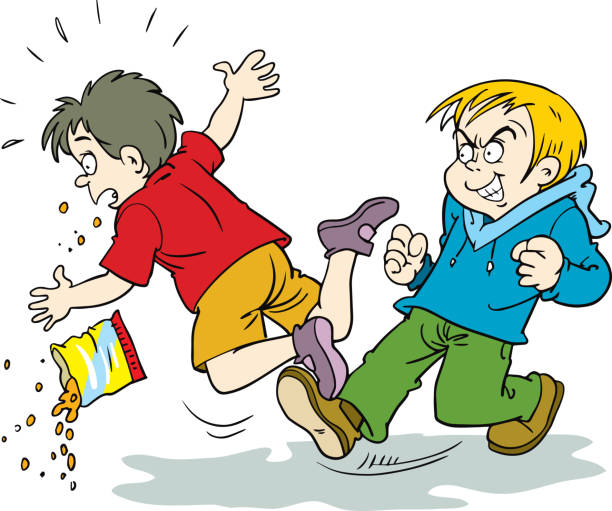![]()
Update Chrome Browser
Bullying or Peer Abuse occurs when children are singled out for ridicule and torment by peers who are relatively more powerful than they are. The children who do the tormenting (e.g., the bullies) are typically older, physically larger, more aggressive or more socially powerful than their victims. The bullies' goal is to experience themselves as powerful and dominant. Their acts of bullying are designed to induce in their victims a sense of powerlessness, helplessness and humiliation, the appearance of which is proof of their dominance. Their ability to force victims to experience painful states they cannot avoid or ignore is proof of bullies' potency and effectiveness. See more
Bullying behaviors vary, and may include verbal taunting (e.g., name calling), physical aggression and even organized defamatory marketing campaigns carried out in a sophisticated manner through the use of text messages, web pages and social networks. Physical bullying may include hitting, tripping, or stealing from other children. Verbal bullying can involve yelling, name calling and other sorts of verbal harassment. Emotional bullying involves telling secrets about other peers without their knowledge, starting hurtful rumors, or purposefully excluding children from games or activities. All types of bullying (these and any others we have not mentioned) are hurtful and unacceptable forms of peer abuse. See more

Parents should not tolerate bullying behavior. Bullying is bad for childrens (and adults) short and long term emotional and mental health as well as educational, occupational and social functioning. Parents who become aware that their children are being bullied, or that their children are bullying other children should take immediate action to shut the bullying process down. There are several strategies which can be brought to bear to accomplish this goal. See more
Many parents have probably heard the old conventional wisdom advice to the effect that the best way to handle a bully is to ignore him (or her). This strategy points in the right direction in that it encourages victims to not react, but it fails miserably in many cases because bullies are able to counter it by escalating the intensity of their violence until the victim cannot ignore it and must react.
Bullying behavior is a serious problem among school-age children and adolescents; it has short- and long-term effects on the individual who is bullied, the individual who bullies, the individual who is bullied and bullies others, and the bystander present during the bullying event. In this chapter, the committee presents the consequences of bullying behavior for children and youth. Bullying can be either direct or indirect, and children and youth may experience different types of bullying.
Specifically the committee examines physical (including neurobiological), mental, and behavioral health consequences. The committee also examines consequences for academic performance and achievement and explores evidence for some of the mechanisms proposed for the psychological effects of bullying. When applicable, we note the limited, correlational nature of much of the available research on the consequences of bullying. See more
Our programs and affiliates network is focused on preventing child physical abuse through several practical solutions for creating the conditions for safe, stable, and nurturing relationships and environments for all children, families, and communities.
Because Childhood Lasts a Lifetime… We Must Work Together to Keep them Safe!
Human Road; is a 501(c)(3) not-for-profit organization.
USA – EIN number: 92-2367542.
Iraq – DNGO number: 1N1812016.
Copyright © Human Road, 2023.
Privacy Policy
Our efficiency maximizes your gift’s impact.